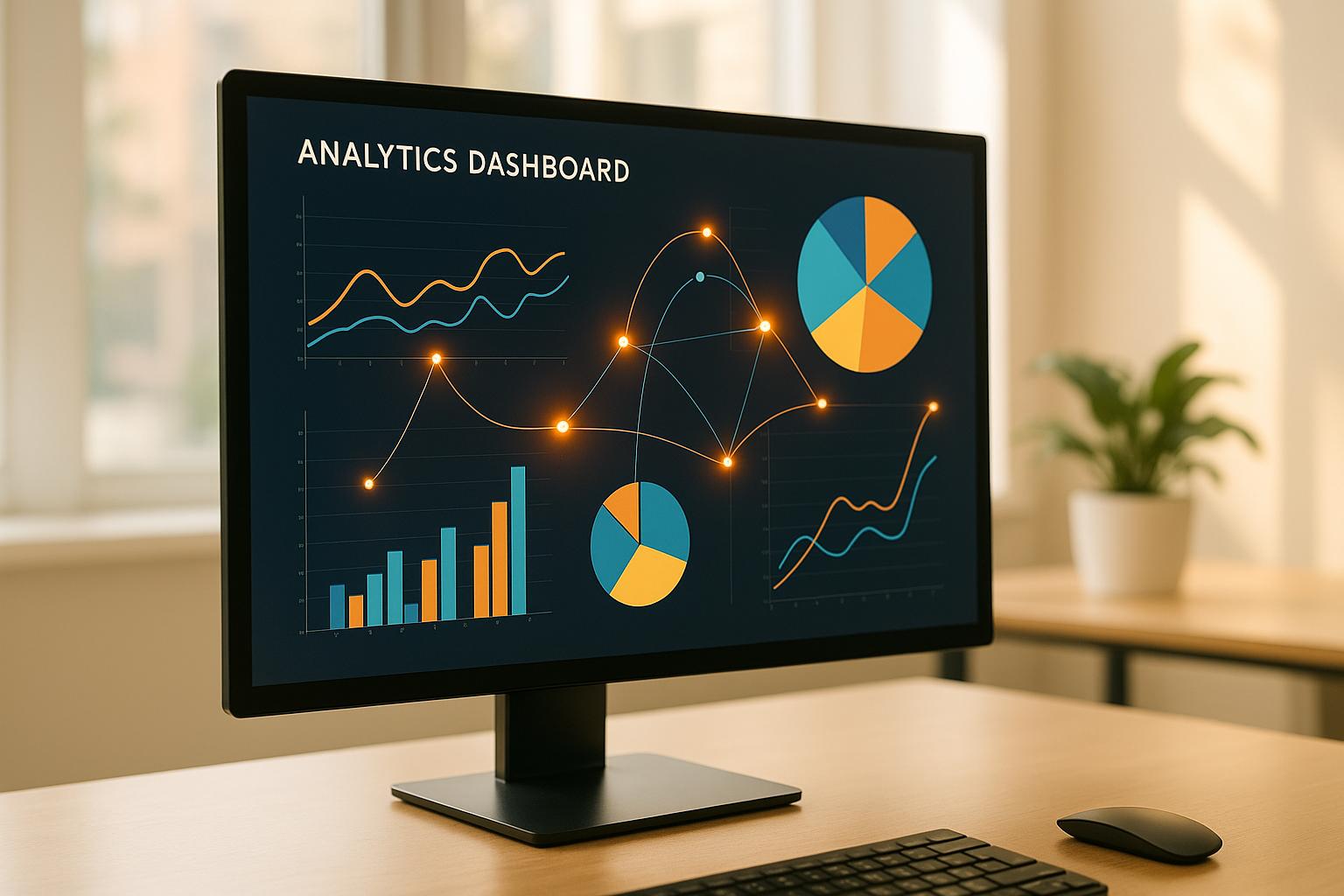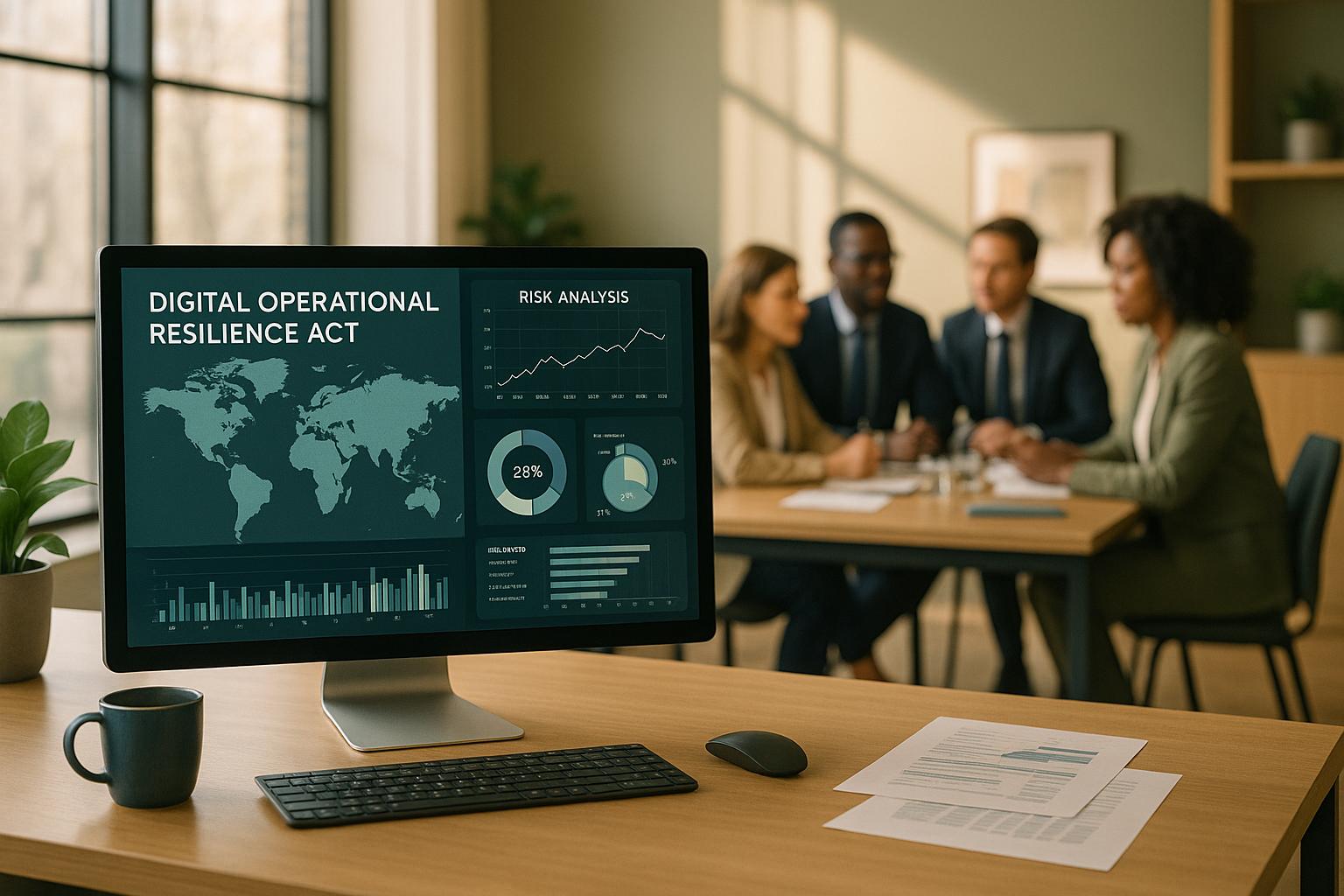ERP systems are prime targets for cyberattacks. With an average data breach costing $4.88 million in 2024, securing ERP integration data is critical to protect financials, customer info, and business operations. Here’s how you can safeguard your ERP systems:
- Key Risks: Vulnerabilities like misconfigurations, outdated systems, and weak passwords can expose data. Consequences include financial losses, downtime, and regulatory fines.
- Core Security Steps: Use Multi-Factor Authentication (MFA), encrypt data (AES-256 for storage, TLS 1.3 for transmission), and apply Role-Based Access Control (RBAC).
- API Security: Implement OAuth 2.0, validate data inputs, and monitor API traffic to prevent breaches.
- Compliance: Meet standards like GDPR, CCPA, HIPAA, and PCI DSS to avoid legal penalties.
Quick Tip: Regularly update your ERP systems, train users on security best practices, and work with experienced consultants to identify and fix vulnerabilities.
Protecting ERP data requires a mix of strong technical safeguards, user training, and expert oversight. Keep reading for actionable steps to secure your systems.
Key Security Risks in ERP Integration
Major System Vulnerabilities
ERP integration often comes with risks tied to implementation errors, misconfigurations, and outdated systems. These issues, especially when paired with third-party integrations, can leave sensitive data exposed . Problems like shadow IT (unauthorized systems), poorly configured settings, and weak password policies can create openings for attackers .
Here are two examples of companies that tackled these challenges effectively:
- Victor Distributing Company (January 2025): Their Epicor Eclipse integration incorporated strict data validation and access controls, safeguarding their customer database.
- Acme Paper & Supply (January 2025): By integrating NetSuite, they eliminated manual data entry and introduced secure, automated synchronization.
When these vulnerabilities are left unaddressed, the consequences can be severe, as shown below.
Data Breach Consequences
In the U.S., a single data breach costs businesses an average of $8.2 million . For smaller companies, the stakes are even higher - 60% shut down within six months of experiencing a breach .
| Impact Area | Consequence |
|---|---|
| Financial | Average loss of $4.24 million per breach |
| Business Continuity | Over one-third of breach costs stem from lost business |
| Legal Exposure | High settlement costs, such as Capital One's $190 million payout |
| Operational | Prolonged system downtime and expensive recovery efforts |
Beyond financial losses, breaches bring about complex compliance challenges, which we’ll explore next.
Data Protection Laws
Several key regulations shape how U.S. organizations handle data security:
- GDPR: Governs businesses managing EU resident data.
- CCPA: Enforces strict data protection standards in California.
- HIPAA: Regulates healthcare data security.
- SOX: Focuses on financial reporting and data integrity.
- PCI DSS: Sets rules for securing payment card data.
Using strong data security tools can help mitigate insider threats, reduce the impact of ERP breaches, and ensure compliance with these regulations .
Core Security Steps for ERP Data
User Authentication Methods
A solid authentication system is the backbone of ERP security. Did you know that about 80% of data breaches are linked to weak or stolen passwords? This makes strong authentication methods non-negotiable. Multi-Factor Authentication (MFA) is a powerful tool that adds extra layers of security by requiring multiple verification steps. Common MFA methods include a mix of password authentication, biometric checks (like fingerprints or facial recognition), hardware security keys, and time-based one-time passwords (TOTP).
Single Sign-On (SSO) simplifies access by letting users log into multiple ERP modules with one set of credentials. This reduces the risk of password fatigue and makes managing access easier . Alongside authentication, encrypting your data - both in transit and at rest - is a key step to protect sensitive information.
Data Encryption Standards
Encryption acts as a shield for your ERP data, ensuring it's secure whether it's being stored or transmitted. Using Transport Layer Security (TLS), especially TLS 1.3, helps secure communication between ERP components .
Here's a breakdown of encryption methods to consider:
| Data State | Encryption Method | Key Details |
|---|---|---|
| At Rest | AES-256 | Protects databases and file systems |
| In Transit | TLS 1.3 | Secures communication between servers |
Focus encryption efforts on sensitive data like financial records, customer information, and intellectual property . Pair encryption with strict access controls for a comprehensive security strategy.
Access Rights Management
Controlling who has access to what is critical for ERP security. A zero-trust approach combined with the principle of least privilege ensures that users only have access to what they absolutely need .
To optimize access rights management:
- Initial Setup: Use Role-Based Access Control (RBAC) for broader roles and Attribute-Based Access Control (ABAC) for more detailed permissions.
- Ongoing Management: Automate processes for adding and removing users, and review permissions regularly.
- Monitoring: Keep an eye on access logs and audit changes to maintain compliance with zero-trust principles.
Strengthen these measures by integrating them with your business applications and offering thorough security training to all users. These steps will help ensure your ERP data remains secure.
API and Integration Security
API Security Controls
Use OAuth 2.0 and JSON Web Tokens (JWT) for authentication. For external third-party clients, opt for opaque tokens to boost security . A centralized OAuth server is recommended for issuing and managing both access and refresh tokens .
- Enable OAuth 2.0 with multi-factor authentication (MFA) for identity verification
- Manage tokens securely with a dedicated vault service like AWS Secrets Manager
- Enforce HTTPS with TLS 1.3 to ensure secure data transmission
- Implement role-based permissions to allow precise access control
Also, ensure all incoming data is validated to guard against injection attacks and other vulnerabilities.
Data Validation Steps
Validating input is crucial to protect ERP integrations from malicious activities. Any data from untrusted sources should go through both syntactic and semantic checks . Using an allowlist approach - where only explicitly approved inputs are accepted - is far more effective than trying to block harmful ones .
- Use server-side validation with trusted libraries
- Apply type conversion with proper exception handling
- Conduct range checks and validate data against predefined schemas
- Restrict free-form text input to approved character sets
These steps ensure that your system processes only safe and expected data.
API Traffic Tracking
Monitoring API traffic helps detect threats before they can compromise your ERP system. It's vital to monitor not just API endpoints but also the underlying infrastructure, as issues can occur anywhere in the stack . Keep an eye on metrics like error rates, request volumes, CPU usage, and API token activity to identify unusual patterns.
For better insights, combine synthetic monitoring (simulated API calls) with real user monitoring (RUM) to test proactively while analyzing real-world usage . Tools like AlertSite and SigNoz can assist with real-time alerts and anomaly detection . This proactive approach helps ensure your API ecosystem remains secure and reliable.
sbb-itb-97f6a47
Data Governance & Security in ERP Systems
Working with Security Experts
Given the risks outlined earlier, teaming up with experienced professionals is critical for safeguarding your ERP systems.
Choosing Security Consultants
When selecting a security consultant, focus on these key attributes:
- Technical Skills: Look for proven knowledge in areas like encryption, access control, compliance, and integration architecture. They should be up to date with current security standards.
- Relevant Experience: Check their track record with similar projects. Ask for case studies and references to verify their expertise.
- Clear Communication: A good consultant will understand your specific needs and explain security solutions in a way that aligns with your business goals.
"Businesses and users are going to embrace technology only if they can trust it." - Satya Nadella
Using the Top Consulting Firms Directory

This directory is a valuable tool for finding qualified ERP security consultants. It offers advanced filtering options to help you narrow down candidates. When evaluating consultants:
- Use filters to focus on your specific needs.
- Review case studies and testimonials to gauge their effectiveness.
- Compare their security strategies and ERP platform expertise.
Routine security assessments by skilled professionals are an effective way to uncover vulnerabilities before they become issues .
Conclusion
Effective ERP systems demand a level of scale and precision that ensures data remains secure at all times .
Building a strong ERP security strategy relies on three key pillars. These pillars work together to create a multi-layered defense, combining technology, user awareness, and expert guidance:
Technical Safeguards
- Keep an eye on system activity and address threats quickly.
- Use automated security tools to minimize risks.
- Regularly update systems to maintain their integrity .
Human Awareness
- Provide consistent security training for all users.
- Enforce strong password policies to prevent breaches.
- Clearly define and communicate access rules .
Expert Involvement
- Conduct regular checks for vulnerabilities.
- Have a solid plan in place for handling security incidents.
- Work with professionals to strengthen your defenses .
These combined efforts create a strong, adaptable system that protects ERP data from potential threats. Staying ahead requires constant attention and proactive measures. By blending technical safeguards, user training, and expert insights, your ERP security strategy can effectively tackle evolving risks.


